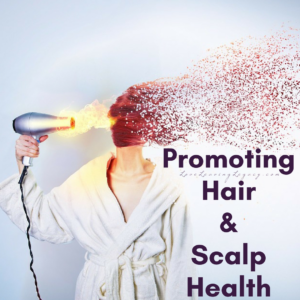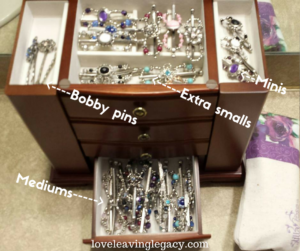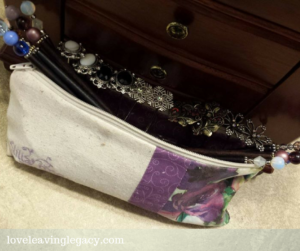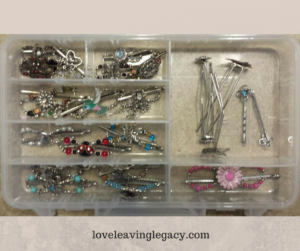Promoting Healthy Hair & Scalp: Ringworm Prevention Tips
As a parent, don’t you just hate it when you think you’re doing a good thing to keep your kids healthy only to find out that what you’ve been doing actually creates a different health issue for them?
Cue the Mom guilt, right?
Parents may have “health reasons” beyond basic hygiene for having children shower nightly, and to wash their hair. Besides teaching good hygiene, Moms are attempting to prevent a health issue, especially if a family has animals and the children are the caretakers of the animals. Most don’t realize that going to bed with wet hair is a bad thing. Most Moms might be thinking that it’s a good thing, obviously!
First, if hair is long, or very thick, parents figure this is a time saver for everyone. Nobody spent a long time at the end of the day blow drying hair with kids complaining about the snarls.

Logically, the hair would have had time to dry naturally, while the child is sleeping, and this is a Mom’s dream: multi tasking!
Natural is a GOOD thing.
Second, Moms everywhere are assuming that by not blow drying, there is reduced damage to hair follicles and of hair strands drying out. Frequent blow drying can make hair become dry and brittle, or not allowing those NATURAL hair oils to penetrate the shaft.
Girls who use a scrunchie to hold up their hair in pony tails, buns, or braids to reduce tangles don’t hurt the scalp while their heads are on the pillow. It’s a soft product, after all!

Thank you Pixabay for a Scrunchie photo!
And, speaking of that pillow, it probably has a breathable cotton pillow case on it, and they are probably having their sheets and pillowcases changed at least weekly, because Moms are imparting that good basic hygiene to their children!

Prevention is GOOD and NATURAL, and, all of this is just hygiene management, right?
WRONG.
Not always.
When we know better, we do better.
I’ve had several customers tell me that they know of people with long thick hair who go to bed with wet hair. They described that the person had “mold” grow in their hair. I’ve wondered, as a “retired” nurse, turned Mom who homeschools and believes in life long learning, turned hair care management direct seller, what that is all about!
Going to bed with wet hair sets up conditions for a warm, moist environment for a fungal infection, especially since it takes so long for hair to dry. That scrunchie they’ve been wearing harbors that fungal infection, and allows the infection to spread if it’s not washed in a hot wash/dry every few days. It also holds in the dampness and prevents air flow to the scalp. Cotton pillowcases cause that drying hair to stay on a damp warm surface, thereby promoting more fungus growth.
Once a fungal infection (dermatophytes) sets up on the scalp, often called ringworm (tinea capitis), there is a red scaly rash with irregular borders on the scalp. “The fungi attack the outer layer of skin on the scalp and the hair shaft.” The infection literally cuts the hair at the follicle shaft, so hair loss is occurring. There may be itching and burning. There are photos and more information of what the condition looks like at the Mayo Clinic website.
It is contagious in that the fungus is on anything the scalp touches. This includes hair styling tools (comb/brush), elastics and barrettes and scrunchies. It includes pillow cases, coat hoods, and hats. A child who shares any of those items can also spread the infection to another child, or even to a beloved pet, as carriers of the infection. A family might also find that the infection carrier is actually that pet who could be asymptomatic!
The treatment and cure can take weeks to months, depending on the treatment route you and your doctor decide to take. There is no one size fits all approach. Sometimes schools will prevent a child with the infection to return to school until they’ve been on an oral antifungal for a week or ten days. As always, medication does not come without risks, and there can be difficult side effects. It also means blood test monitoring for liver function.
You and your doctor may opt for a more conservative approach to treatment with a prescription shampoo or a cream, or any combination of medication, shampoo, and cream. If a parent opts to try essential oils or an herbal approach to cure, they should ask their doctor or pharmacist for any drug interactions of the oil, supplement, or herb to any prescription medication, and be careful to research its proven efficacy. Ringworm *is* hard to treat, and daily consistent treatment is somewhat laborious.
Daiy hair washing with a prescription 2% ketoconazole antifungal shampoo, and blow drying hair and the scalp will likely be part of the treatment There ought to be daily pillow case changes and daily cleansing of hairbrushes and combs with barbicide cleaner from the beauty supply store. During winter, one would also need to wash and dry snow hats. Silk pillowcases keep hair friction and stress to a minimum, as well as keeps the scalp cooler. Obviously, cleaning any hair ties or barrettes or flexi clips a child has been wearing is in order to prevent a re-infection. Anything that can be hot washed and hot dried during an infection is best. Keep hair loosely braided to allow air flow to the area. To treat a potential carrier in the home, all family members may also consider using a Nizoral shampoo at least weekly. This is all important in order to avoid reinfection.

As I said earlier, when we know better, we do better!
Now you (and I) know.
Let’s do better hair care together!
For more hair health tips and information like this,
come join my Facebook customer group,
my LoveLeavingLegacy business page,
the Sassy Direct blog where this article is linked,
and sign up for my newsletter!
Blessings,
Deb
Don’t just take my word for it. To read more on this subject:




 Lilla Rose is a flexible enough business opportunity that we actually use our business as training ground for our children in entrepreneurship in our homeschooling.
Lilla Rose is a flexible enough business opportunity that we actually use our business as training ground for our children in entrepreneurship in our homeschooling.












